Speed Regulator-Based Path Following Control for an Underactuated Hovercraft Considering the Sideslip Phenomenon
Abstract
1. Introduction
2. Mathematical Preliminaries and Problem Formulation
2.1. Four-Degree-of-Freedom Hovercraft Model
2.2. Sideslip Angle Issue Analysis
3. Control Algorithm Design
3.1. Kinematic Control with Sideslip Reduction
3.2. Path Curvature-Based Speed Regulation
| Algorithm 1 Hovercraft path following algorithm |
|
| Algorithm 2 Speed regulator algorithm |
|
3.3. Kinetic Control Law Design
3.4. Stability Analysis
4. Simulation
5. Conclusions
Author Contributions
Funding
Institutional Review Board Statement
Informed Consent Statement
Data Availability Statement
Conflicts of Interest
References
- Xu, S.; Tang, Y.; Chen, K. Numerical investigation on pressure responsiveness properties of the skirt-cushion system of an air cushion vehicle. Int. J. Nav. Archit. Ocean Eng. 2020, 12, 928–942. [Google Scholar] [CrossRef]
- Wang, Y.; Zhou, H. Data-driven constrained reinforcement learning algorithm for path tracking control of hovercraft. Ocean Eng. 2024, 307, 118169. [Google Scholar] [CrossRef]
- Zuo, Z.; Chen, G.; Zhou, X. Analysis of Wave Load Characteristics of Hovercraft Based on Model Test. J. Mar. Sci. Eng. 2024, 12, 1537. [Google Scholar] [CrossRef]
- Kristoffersen, Y.; Hall, J.K. Hovercraft as a Mobile Science Platform Over Sea Ice in the Arctic Ocean. Oceanography 2014, 27, 170–179. [Google Scholar] [CrossRef]
- Liu, R.; Li, X.; Qian, H. Modeling and experimental study of the cushion lift dynamics system of a polar hovercraft. Ocean Eng. 2023, 284, 115246. [Google Scholar] [CrossRef]
- Jin, J.; Zhou, L.; Ding, S. Numerical Simulation of the Ice Breaking Process for Hovercraft. J. Mar. Sci. Eng. 2021, 9, 928. [Google Scholar] [CrossRef]
- Teng, F.; Zhang, X.; Li, T. Distributed resilient energy management for seaport microgrid against stealthy attacks with limited security defense resource. IEEE Trans. Cybern. 2025, 55, 917–926. [Google Scholar] [CrossRef]
- Shan, Q.; Liu, W.; Li, T. A topology reconfiguration strategy for containment control of the multi-USV system based on algebraic connectivity. IEEE Trans. Ind. Electron. 2025, 72, 5322–5332. [Google Scholar] [CrossRef]
- Xie, W.; Cabecinhas, D.; Cunha, R. Robust Motion Control of an Underactuated Hovercraft. IEEE Trans. Control Syst. Technol. 2019, 27, 2195–2208. [Google Scholar] [CrossRef]
- Yan, L.; Ma, B.; Jia, Y. Adaptive Containment Control of Multiple Underactuated Hovercrafts Subjected to Switching and Directed Topologies. IEEE Syst. J. 2023, 17, 3962–3973. [Google Scholar] [CrossRef]
- Su, Y.; Teng, F.; Li, T. Adaptive prescribed-time tracking control for an unmanned surface vehicle considering motor-driven propellers. IEEE Trans. Ind. Inform. 2025, 21, 1665–1673. [Google Scholar] [CrossRef]
- Su, Y.; Teng, F.; Li, T. Fixed-time optimal trajectory tracking control for an electric unmanned surface vehicle via reinforcement learning. IEEE/ASME Trans. Mechatron. 2025. [Google Scholar] [CrossRef]
- Xu, Z.; He, S.; Zhou, W. A Gradient-Based Path Following Control Method for Underactuated Autonomous Marine Vehicle. IEEE J. Ocean. Eng. 2025, 50, 1855–1865. [Google Scholar] [CrossRef]
- Xu, Z.; He, S.; Zhou, W. Path Following Control With Sideslip Reduction for Underactuated Unmanned Surface Vehicles. IEEE Trans. Ind. Electron. 2024, 71, 11039–11047. [Google Scholar] [CrossRef]
- Fu, H. Analysis and consideration on safety of all-lift hovercraft. Ship Boat 2008, 6, 1–3. [Google Scholar]
- Chen, L.; Shan, Y.; Tian, W. A Fast and Efficient Double-Tree RRT*-Like Sampling-Based Planner Applying on Mobile Robotic Systems. IEEE/ASME Trans. Mechatronics 2018, 23, 2568–2578. [Google Scholar] [CrossRef]
- Song, R.; Liu, Y.; Bucknall, R. Smoothed A* algorithm for practical unmanned surface vehicle path planning. Appl. Ocean Res. 2019, 83, 9–20. [Google Scholar] [CrossRef]
- Wang, Y.; Tong, H.; Fu, M. Line-of-sight guidance law for path following of amphibious hovercrafts with big and time-varying sideslip compensation. Ocean Eng. 2019, 172, 531–540. [Google Scholar] [CrossRef]
- Fu, M.; Wang, Q. Safety-Guaranteed, Robust, Nonlinear, Path-Following Control of the Underactuated Hovercraft Based on FTESO. J. Mar. Sci. Eng. 2023, 11, 1235. [Google Scholar] [CrossRef]
- Fu, M.; Zhang, T.; Wang, D. ESO-based line-of-sight guidance law for path following of air cushion vehicle with exact drift angle compensation. In Proceedings of the 2018 IEEE International Conference on Information and Automation (ICIA), Wuyi Mountain, China, 11–13 August 2018; pp. 511–516. [Google Scholar]
- Jeong, S.; Chwa, D. Coupled Multiple Sliding-Mode Control for Robust Trajectory Tracking of Hovercraft With External Disturbances. IEEE Trans. Ind. Electron. 2018, 65, 4103–4113. [Google Scholar] [CrossRef]
- Chaos, D.; Moreno-Salinas, D.; Muñoz-Mansilla, R. Nonlinear Control for Trajectory Tracking of a Nonholonomic RC-Hovercraft with Discrete Inputs. Math. Probl. Eng. 2013, 2013, 589267. [Google Scholar] [CrossRef]
- Chen, X.; Ma, F.; Wu, Y. MFMDepth: MetaFormer-based monocular metric depth estimation for distance measurement in ports. Comput. Ind. Eng. 2025, 207, 111325. [Google Scholar] [CrossRef]
- Chen, X.; Liu, S.; Liu, R.W. Quantifying Arctic oil spilling event risk by integrating an analytic network process and a fuzzy comprehensive evaluation model. Ocean Coast. Manag. 2022, 228, 106326. [Google Scholar] [CrossRef]
- Han, Y.; Liu, X. Higher-order sliding mode control for trajectory tracking of air cushion vehicle. Optik 2016, 127, 2878–2886. [Google Scholar] [CrossRef]
- Aguiar, A.P.; Hespanha, J.P. Trajectory-Tracking and Path-Following of Underactuated Autonomous Vehicles With Parametric Modeling Uncertainty. IEEE Trans. Autom. Control 2007, 52, 1362–1379. [Google Scholar] [CrossRef]
- Dacic, D.B.; Subbotin, M.V.; Kokotovic, P.V. Control Effort Reduction in Tracking Feedback Laws. IEEE Trans. Autom. Control 2006, 51, 1831–1837. [Google Scholar] [CrossRef]
- Fu, M.; Wang, T.; Wang, C. Barrier Lyapunov Function-Based Adaptive Control of an Uncertain Hovercraft with Position and Velocity Constraints. Math. Probl. Eng. 2019, 2019, 1940784. [Google Scholar] [CrossRef]
- Chen, G.; Zhou, Q.; Ren, H.; Li, H. Sensor-fusion-based event-triggered following control for nonlinear autonomous vehicles under sensor attacks. IEEE Trans. Autom. Sci. Eng. 2025, 22, 17411–17420. [Google Scholar] [CrossRef]
- Chen, G.; Zhou, Q.; Li, H.; Yao, D.; Ahn, C.K. Event-triggered state estimation and control for networked nonlinear systems under dynamic sparse attacks. IEEE Trans. Netw. Sci. Eng. 2024, 11, 1947–1958. [Google Scholar] [CrossRef]

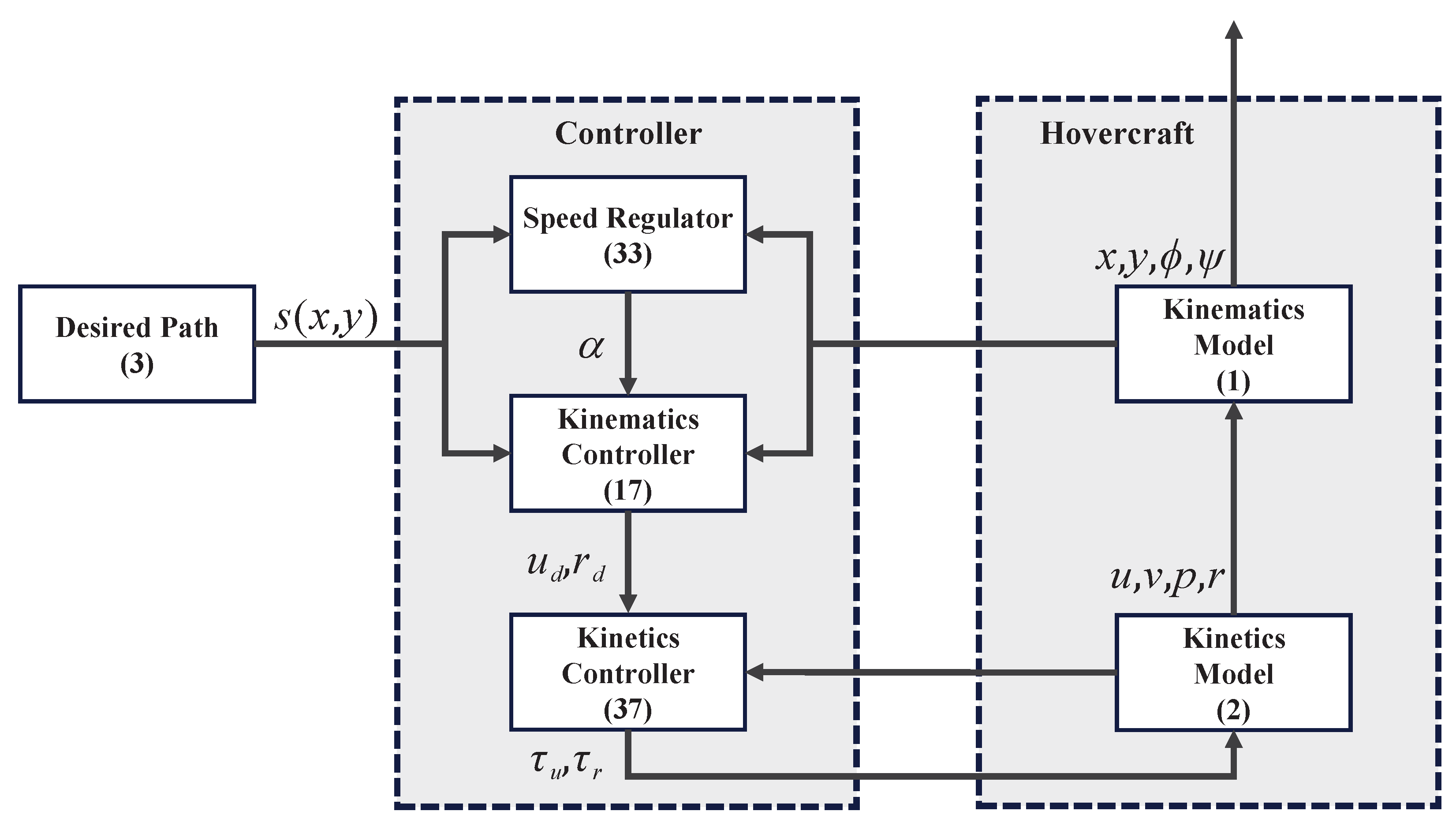
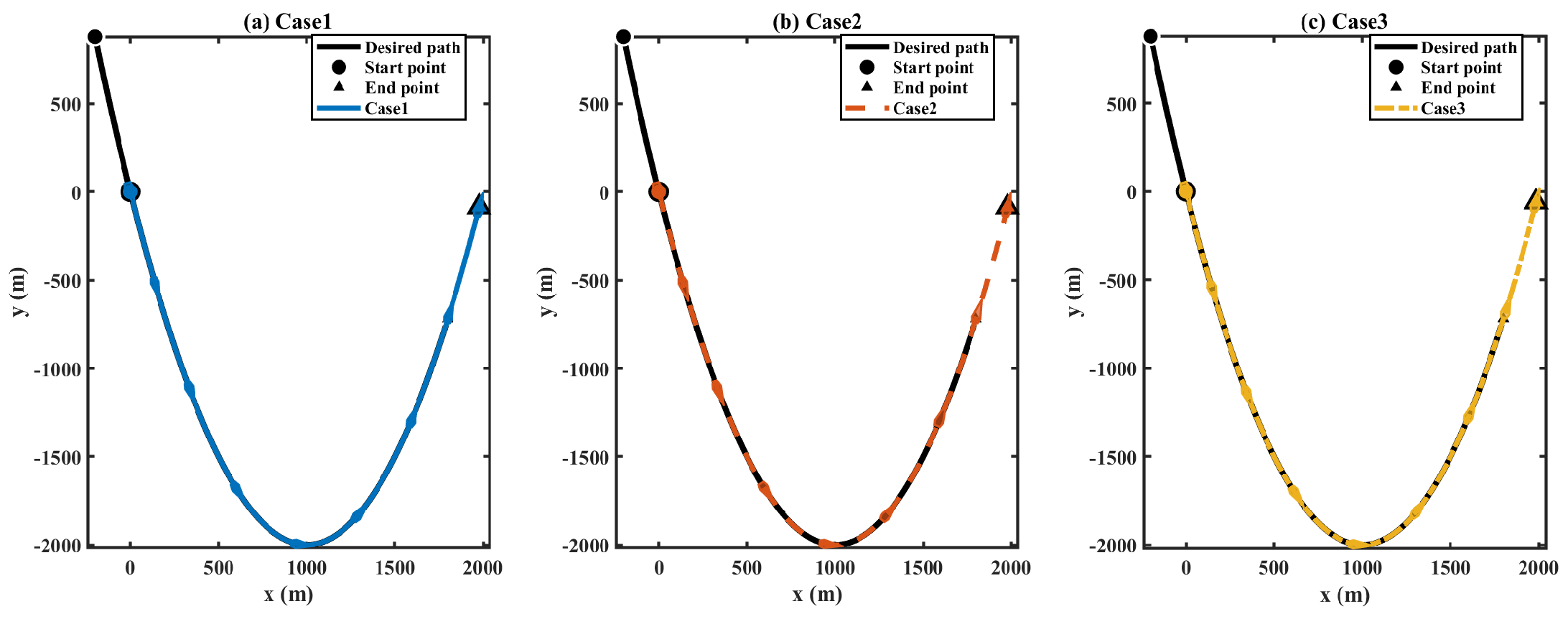
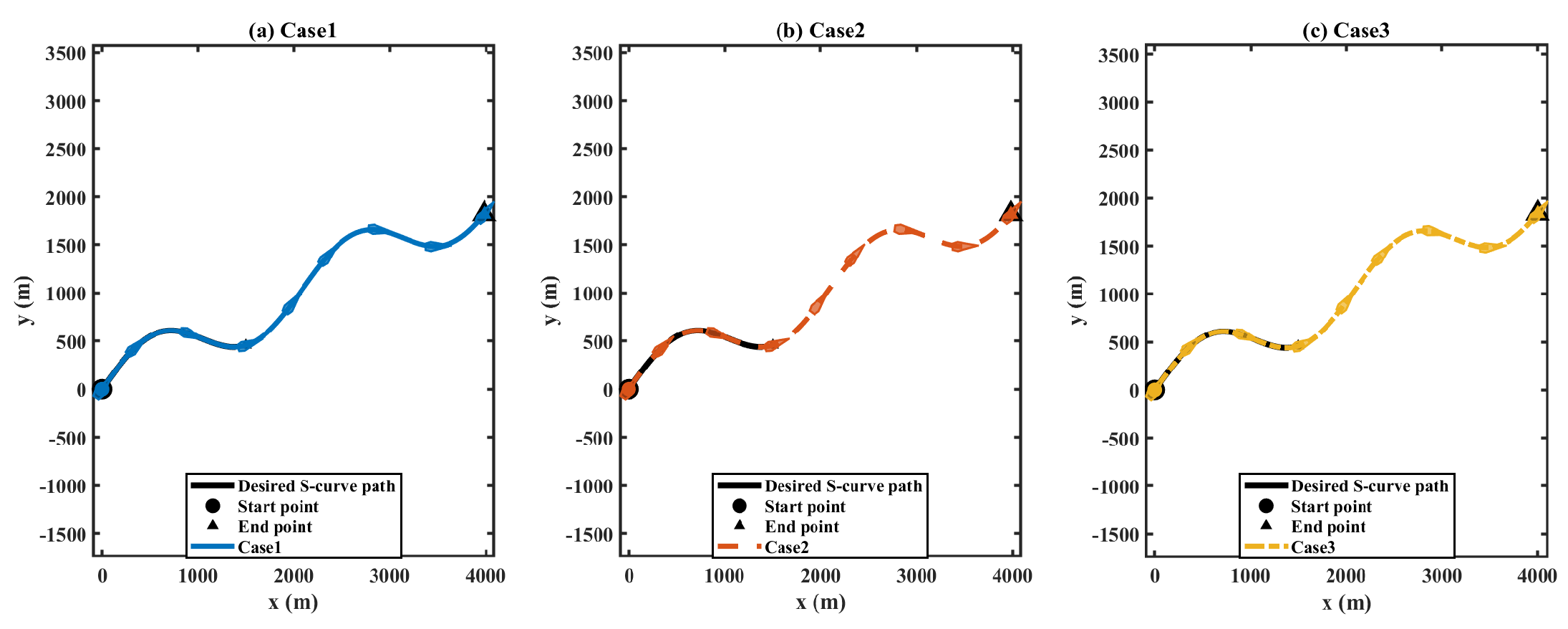
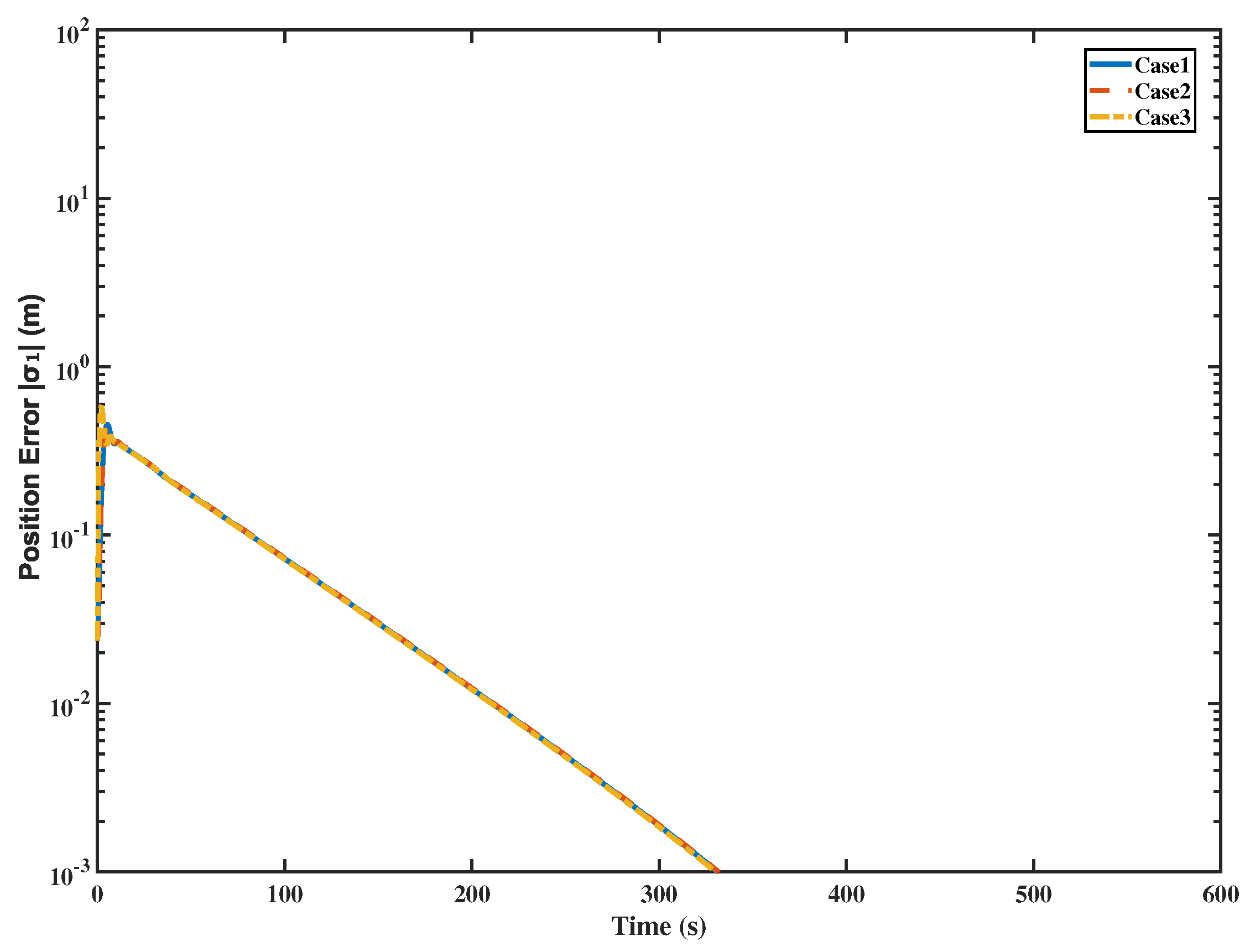

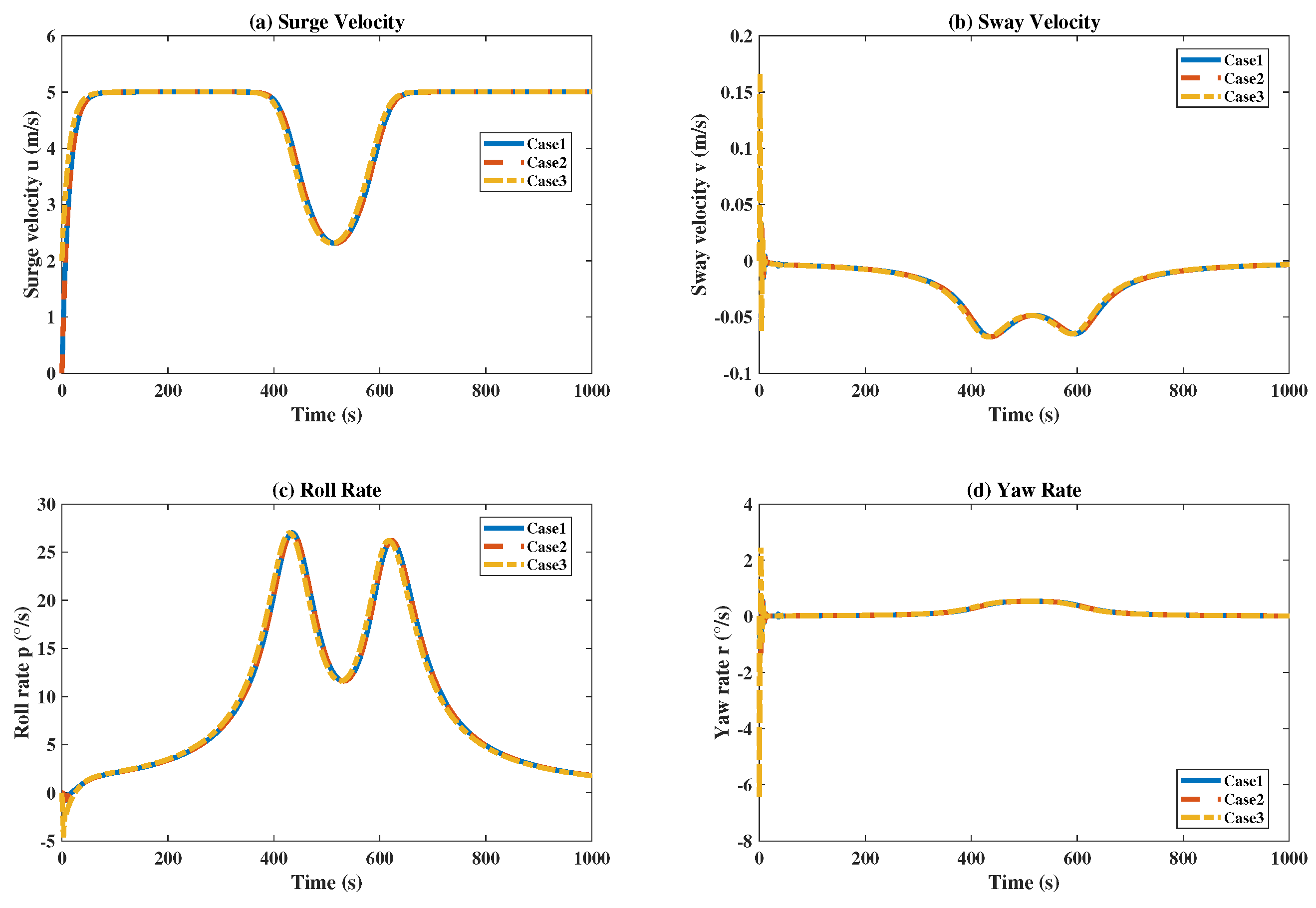
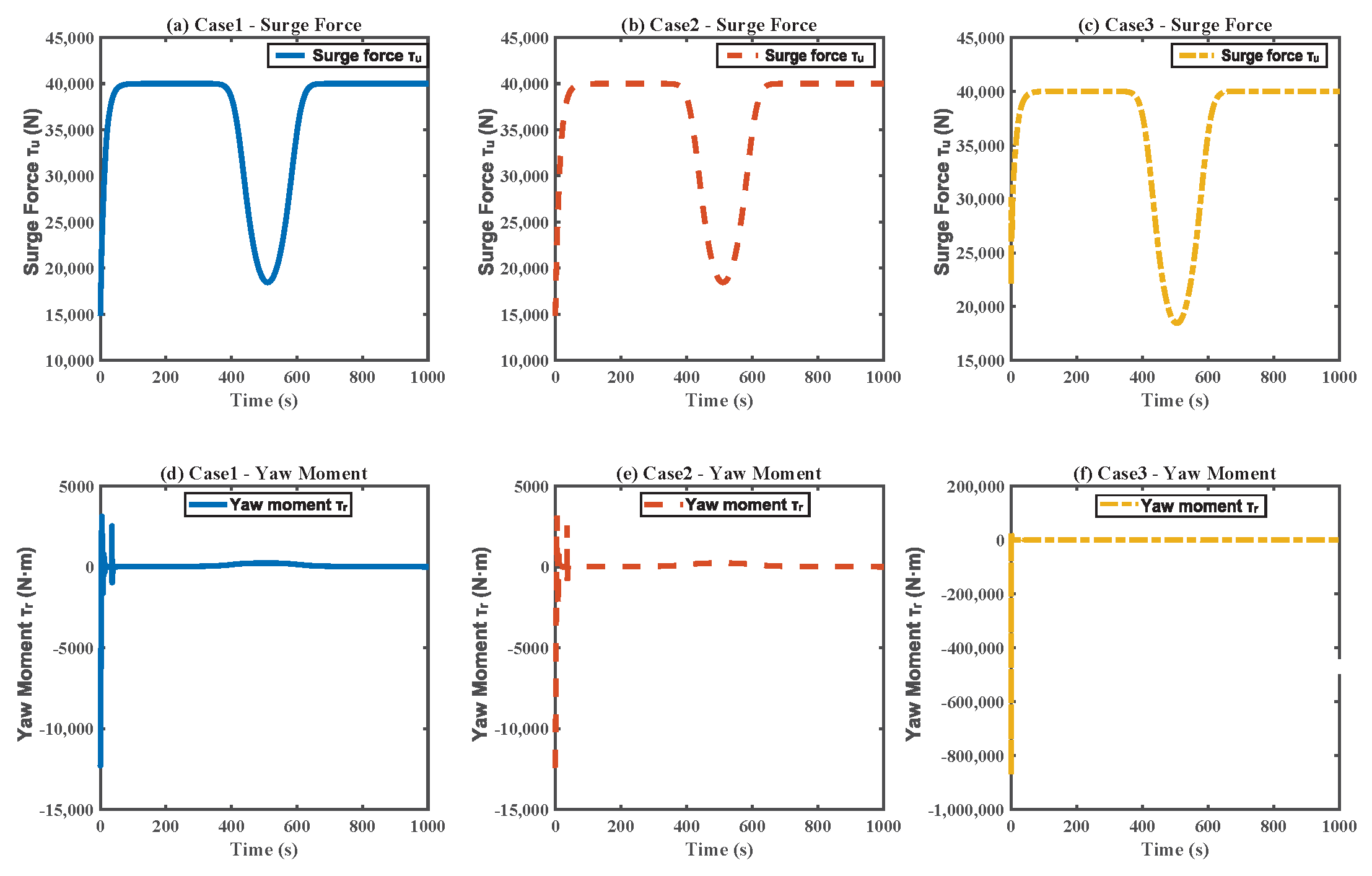
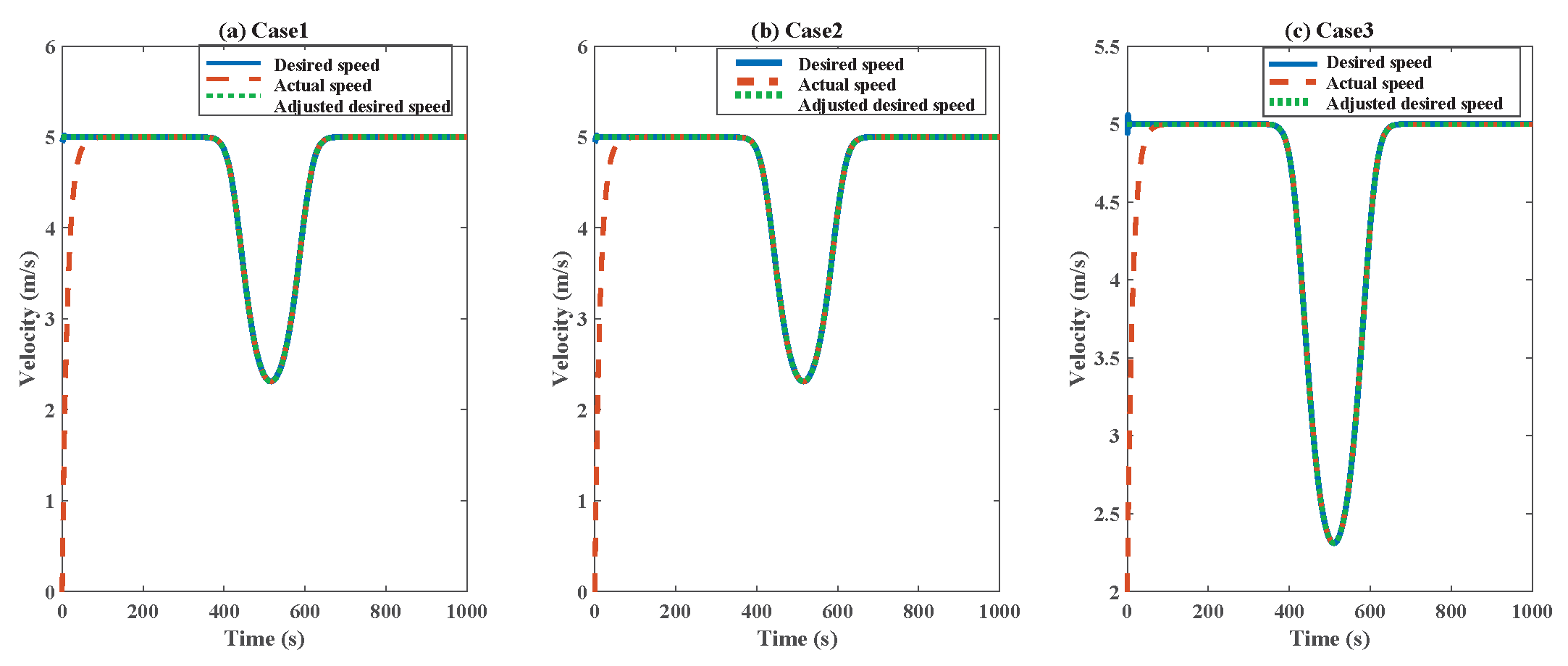


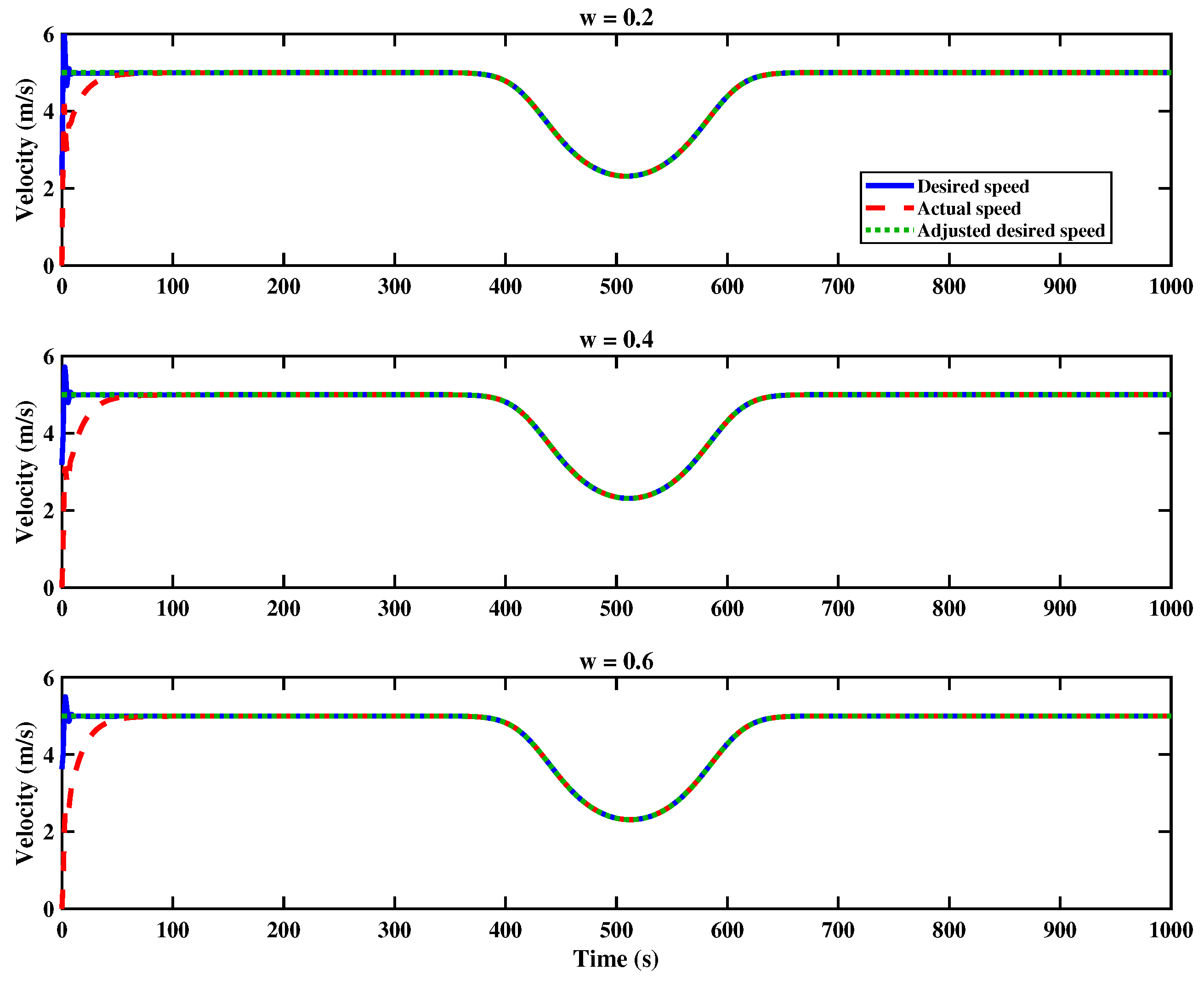
Disclaimer/Publisher’s Note: The statements, opinions and data contained in all publications are solely those of the individual author(s) and contributor(s) and not of MDPI and/or the editor(s). MDPI and/or the editor(s) disclaim responsibility for any injury to people or property resulting from any ideas, methods, instructions or products referred to in the content. |
© 2025 by the authors. Licensee MDPI, Basel, Switzerland. This article is an open access article distributed under the terms and conditions of the Creative Commons Attribution (CC BY) license (https://creativecommons.org/licenses/by/4.0/).
Share and Cite
Yu, R.; Tang, W.; Li, T. Speed Regulator-Based Path Following Control for an Underactuated Hovercraft Considering the Sideslip Phenomenon. J. Mar. Sci. Eng. 2025, 13, 1774. https://doi.org/10.3390/jmse13091774
Yu R, Tang W, Li T. Speed Regulator-Based Path Following Control for an Underactuated Hovercraft Considering the Sideslip Phenomenon. Journal of Marine Science and Engineering. 2025; 13(9):1774. https://doi.org/10.3390/jmse13091774
Chicago/Turabian StyleYu, Renhai, Wanyu Tang, and Tieshan Li. 2025. "Speed Regulator-Based Path Following Control for an Underactuated Hovercraft Considering the Sideslip Phenomenon" Journal of Marine Science and Engineering 13, no. 9: 1774. https://doi.org/10.3390/jmse13091774
APA StyleYu, R., Tang, W., & Li, T. (2025). Speed Regulator-Based Path Following Control for an Underactuated Hovercraft Considering the Sideslip Phenomenon. Journal of Marine Science and Engineering, 13(9), 1774. https://doi.org/10.3390/jmse13091774






